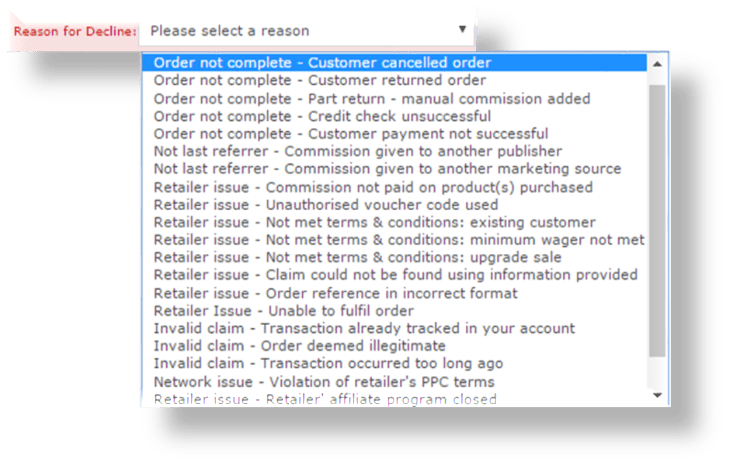Are you receiving honest rewards for honest sales?
Written by Matt Swan on 3 minute read

There is a need for transparency across the affiliate channel. It is vital that advertisers are clear on commission rates they are paying as well as how their programme is set-up. This will have an impact on the amount of commission a publisher can expect to earn from a sale.
One of the key areas where we need to see an increased amount of transparency is the reasons an advertiser may have for declining sales. It’s an issue we know a lot of publishers feel strongly about, and one the entire industry needs to tackle.
Introduction
At last year’s Performance Marketing Insights we presented on ‘The Hidden Commission Killers in Affiliate Marketing’. This explored the concept of a number of factors across the affiliate channel which could lead to the erosion of commission publishers could expect to earn in return for the sales they have generated.
De-duplication, lack of basic mobile tracking and the inability to track consumers across device were just some of the many factors that could lead to a reduction in commission. With the majority of these sitting outside of a publisher’s control, should advertisers be reconsidering the commission rate they are willing to pay or how commissions are awarded?
One thing there is a definite need for across the channel is transparency. It is vital that advertisers are clear on commission rates they are paying and how their programme is set-up. This will have an impact on the amount of commission a publisher can expect to earn from a sale.
One of the key areas where we need to see an increased amount of transparency is the reasons an advertiser may have for declining sales. It’s an issue we know a lot of publishers feel strongly about, and one the entire industry needs to tackle.
There can be multiple reasons for a declined commission – the terms and conditions of the programme may have been breached, the sale attributed to another channel or the order could have been returned of cancelled. What is important is that publishers are given visibility over the reasons their sales have been declined, and any advertiser practices that don’t conform to the standards we expect in the industry are addressed.
In this document we take a look at how decline rates across the network have changed over time and the key trends behind these reasons. We also consider the best practice for advertisers when handling declined sales.
Average decline rate across the network
The chart below considers the average decline rate across the network from October 2014 to October 2015. Despite a wide variety of opinions on this topic from across the industry, it’s clear that decline rates are not changing as significantly as many think. However, there is an upward trajectory that needs to be understood.
Typically, just over a quarter of all transactions that take place across the network are declined. As mentioned this could be for a number of appropriate reasons but it is important to provide transparency over these.
For every transaction that is declined, the advertiser needs to provide a reason as to why these sales were rejected and this has enabled us to monitor the trends in decline rates.


